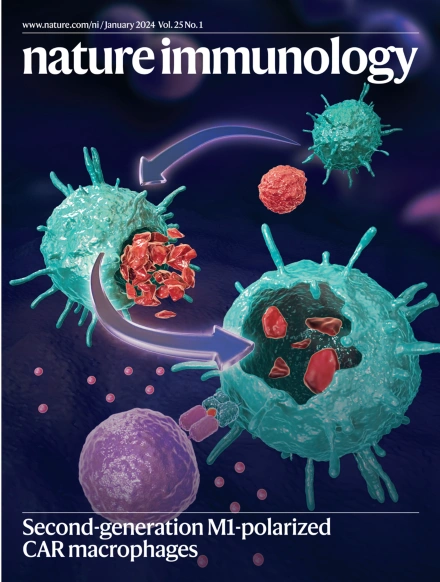Transcription factors TCF4 and KLF4 respectively control the development of the DC2A and DC2B lineages
IF 27.6
1区 医学
Q1 IMMUNOLOGY
引用次数: 0
Abstract
Conventional dendritic cells (cDCs) are a heterogeneous population of professional antigen-presenting cells that bridge innate and adaptive immunity. Many studies in mice have identified various populations of cDCs whose inter-relationships and discrete identities, as well as their link to plasmacytoid DCs (pDCs), have not been cohesively addressed. Here, by combining single-cell sequencing, transcription factor fate-mapping models, conditional knockout models and adoptive transfer, we show that Klf4 expression clearly separates cDC lineage from the pDC lineage, and defined two pre-DC2 subsets: Siglec-H+CD115− pre-DC2s and Siglec-HloCD115+ pre-DC2s. While Siglec-H+CD115− pre-DC2s represent the pDC-like cells that give rise to CD7+CD11blo DC2As in a TCF4-dependent manner, Siglec-HloCD115+ pre-DC2s give rise to CD7−CD11bhi DC2Bs in a KLF4-dependent manner. These data reveal the transcriptional basis of two pre-DC2 subsets and present a firm framework for mouse cDC classification, paving the way for a better understanding of these cells in tissues and in disease. Here Zhu et al. investigate the ontogeny of type 2 dendritic cells (DC2s) in mice. Using Klf4 expression to distinguish conventional DC precursors from plasmacytoid DCs, they identify two pre-DC2 populations with their development controlled by TCF4 and KLF4 that give rise to DC2A and DC2B cells.


转录因子TCF4和KLF4分别控制DC2A和DC2B谱系的发育
传统的树突状细胞(cdc)是一种异质的专业抗原呈递细胞,架起先天免疫和适应性免疫的桥梁。许多小鼠研究已经确定了各种各样的cdc群体,它们的相互关系和离散身份,以及它们与浆细胞样dc (pDCs)的联系,尚未得到完整的解决。通过单细胞测序、转录因子命运定位模型、条件敲除模型和过继性转移,研究人员发现Klf4表达明显区分了cDC谱系和pDC谱系,并定义了两个pre-DC2亚群:siglece - h +CD115−pre-DC2s和siglece - hlocd115 + pre-DC2s。siglece - h +CD115 - pre-DC2s代表以tcf4依赖性方式产生CD7+CD11blo DC2As的pdc样细胞,而siglece - hlocd115 + pre-DC2s以klf4依赖性方式产生CD7 - CD11bhi DC2Bs。这些数据揭示了两个前dc2亚群的转录基础,并为小鼠cDC分类提供了一个坚实的框架,为更好地了解组织和疾病中的这些细胞铺平了道路。
本文章由计算机程序翻译,如有差异,请以英文原文为准。
求助全文
约1分钟内获得全文
求助全文
来源期刊

Nature Immunology
医学-免疫学
CiteScore
40.00
自引率
2.30%
发文量
248
审稿时长
4-8 weeks
期刊介绍:
Nature Immunology is a monthly journal that publishes the highest quality research in all areas of immunology. The editorial decisions are made by a team of full-time professional editors. The journal prioritizes work that provides translational and/or fundamental insight into the workings of the immune system. It covers a wide range of topics including innate immunity and inflammation, development, immune receptors, signaling and apoptosis, antigen presentation, gene regulation and recombination, cellular and systemic immunity, vaccines, immune tolerance, autoimmunity, tumor immunology, and microbial immunopathology. In addition to publishing significant original research, Nature Immunology also includes comments, News and Views, research highlights, matters arising from readers, and reviews of the literature. The journal serves as a major conduit of top-quality information for the immunology community.
 求助内容:
求助内容: 应助结果提醒方式:
应助结果提醒方式:


